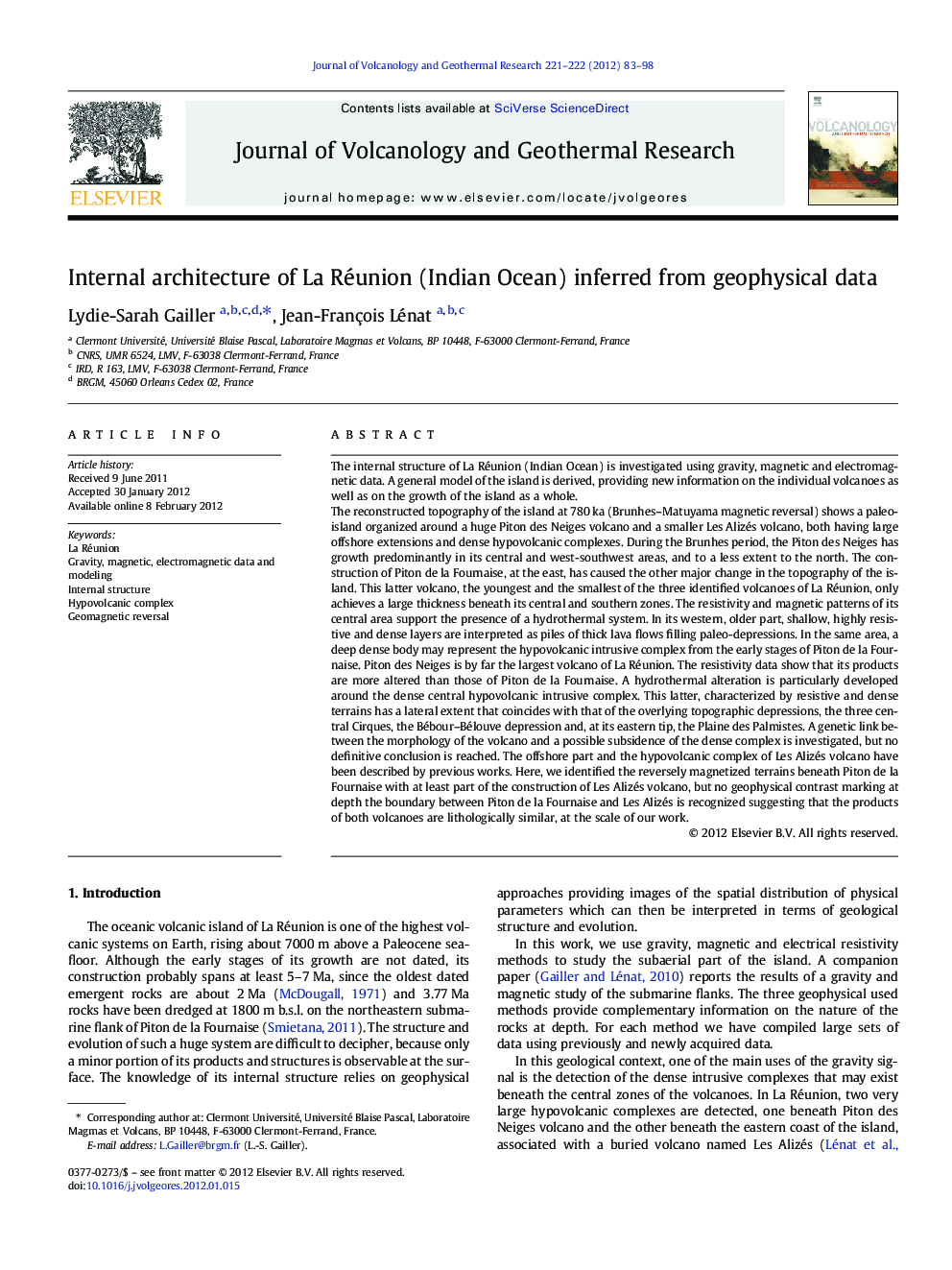| کد مقاله | کد نشریه | سال انتشار | مقاله انگلیسی | نسخه تمام متن |
|---|---|---|---|---|
| 4713421 | 1638386 | 2012 | 16 صفحه PDF | دانلود رایگان |

The internal structure of La Réunion (Indian Ocean) is investigated using gravity, magnetic and electromagnetic data. A general model of the island is derived, providing new information on the individual volcanoes as well as on the growth of the island as a whole.The reconstructed topography of the island at 780 ka (Brunhes–Matuyama magnetic reversal) shows a paleo-island organized around a huge Piton des Neiges volcano and a smaller Les Alizés volcano, both having large offshore extensions and dense hypovolcanic complexes. During the Brunhes period, the Piton des Neiges has growth predominantly in its central and west-southwest areas, and to a less extent to the north. The construction of Piton de la Fournaise, at the east, has caused the other major change in the topography of the island. This latter volcano, the youngest and the smallest of the three identified volcanoes of La Réunion, only achieves a large thickness beneath its central and southern zones. The resistivity and magnetic patterns of its central area support the presence of a hydrothermal system. In its western, older part, shallow, highly resistive and dense layers are interpreted as piles of thick lava flows filling paleo-depressions. In the same area, a deep dense body may represent the hypovolcanic intrusive complex from the early stages of Piton de la Fournaise. Piton des Neiges is by far the largest volcano of La Réunion. The resistivity data show that its products are more altered than those of Piton de la Fournaise. A hydrothermal alteration is particularly developed around the dense central hypovolcanic intrusive complex. This latter, characterized by resistive and dense terrains has a lateral extent that coincides with that of the overlying topographic depressions, the three central Cirques, the Bébour–Bélouve depression and, at its eastern tip, the Plaine des Palmistes. A genetic link between the morphology of the volcano and a possible subsidence of the dense complex is investigated, but no definitive conclusion is reached. The offshore part and the hypovolcanic complex of Les Alizés volcano have been described by previous works. Here, we identified the reversely magnetized terrains beneath Piton de la Fournaise with at least part of the construction of Les Alizés volcano, but no geophysical contrast marking at depth the boundary between Piton de la Fournaise and Les Alizés is recognized suggesting that the products of both volcanoes are lithologically similar, at the scale of our work.
► This paper presents an original study of the emerged system of La Réunion based on the interpretation of gravity, magnetic and electromagnetic data.
► 2D models are built based on the geological data and previous interpretation.
► We propose a new 3D image of the internal structure of the volcanic system in agreement with the results obtained at the scale of the immerged complex.
► An image of the reconstructed topography of the island at 780 ka is also proposed.
Journal: Journal of Volcanology and Geothermal Research - Volumes 221–222, 1 April 2012, Pages 83–98